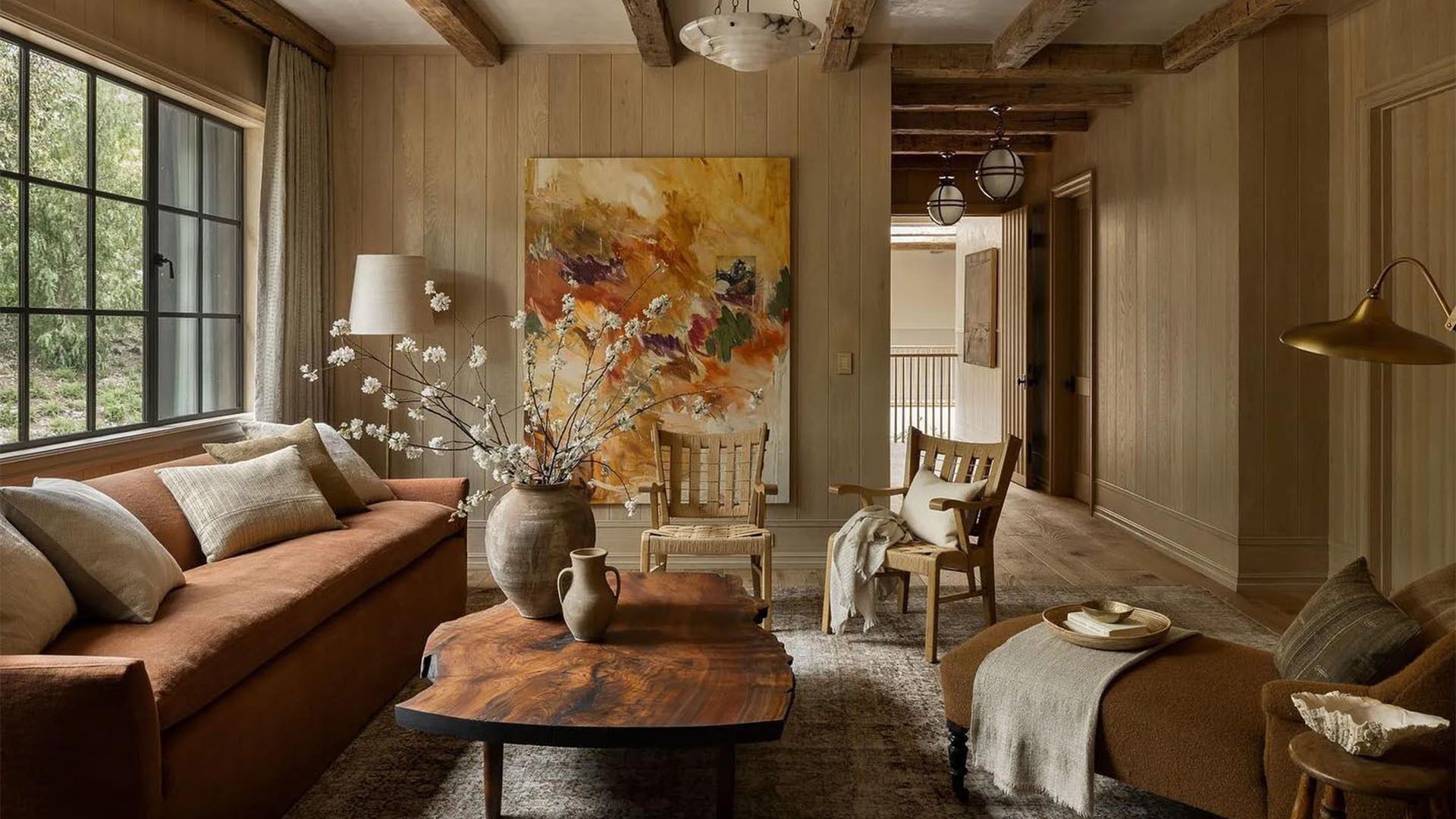
Put down the plastic tchotchke, and take a pause from mindlessly adding faddish products to your cart—it’s time to take it slow.
You’ve heard of slow fashion, slow food, and slow living—now it’s time for slow decor. The latest tortoise-speed approach to interior design is all about intentionality and originality to craft a space filled with meaning.
In other words, slow decor is the perfect antidote to the current holiday rush of buying things we might not need in the long run.
“Decorating in this style isn’t about chasing an aesthetic but curating spaces that resonate with authenticity and personal stories,” says Gideon Mendelson of Mendelson Group. “The true essence of this trend lies in subtleties such as cherished heirlooms and the intimate connection between a space and its inhabitant.”
If creating this kind of deeply personal space sounds appealing, keep reading. We asked designers for their top insights to help you bring a grounding dash of slow decor into your home.
Prioritize comfort
To create a slow decor space, you first need to make it extremely comfortable. We’re talking cozy enough that you want to spend time in it and truly embrace a slow-living lifestyle.
This is where choosing comfy base items comes into play, even if that means including your favorite ugly but cozy blanket or a grown kid’s sentimental stuffy.
“At its core, slow living is a way of life that celebrates those moments in our day-to-day lives that make us happy or create a sense of calm,” says designer Jess Onorato, of Habitat Home & Garden. “Designing a space that supports relaxation and comfort is a priority.”
How to slow down: Opt for a few hand-knit throw blankets, boho cushions—or anything else that gets you ready to relax and slow the heck down.
Use mood lighting
Another way to get your overworked self into a slow decor mindset is by ditching your bright overhead lights in favor of something more soothing. In other words, lots and lots of mood lighting.
“It is important to consider appropriate lighting when creating an intentional space, as the concept of slow living is about retreating from the chaos of the outside world,” says Onorato.
An easy way to start is by designing spaces around large windows with plenty of natural light. A mirror opposite a window will help bring in even more light.
How to slow down: Once the sun sets, be sure to keep a natural, calm glow in your home.
“Incorporate things like a floor lamp with soft lighting and candlelight,” says Onorato.
Choose vintage over new
One of our favorite aspects of slow decor is that it tends to be more sustainable and shies away from fast-fashion (i.e., high waste) items. A great way to embrace this design aspect is by opting for vintage pieces over new products when possible.
“If you’re looking for a good investment, go straight to vintage,” says Dan Mazzarini, creative director of Archive. “Things that have already stood the test of time often have 40 to 50 years left in them. Side tables, desks, drawers, and even cabinets are great pieces to source vintage.”
How to slow down: Check your local estate sales and thrift shops for unique finds. Or take your vintage shopping online to score some quality pieces for your home.
Add antique accents
Don’t limit your love of everything time-worn to key pieces like tables and chairs. You can also create a slow decor look in your space with carefully selected antique accents.
“This ties into the slow decor aesthetic, as it embraces the unexpected, creating visual interest with pieces that speak to the client in a specific way,” says designer Devin Shaffer, of Decorilla.
You can start slow (pun intended) and invest only in the items you truly connect with. A porcelain statue that reminds you of your childhood dog? Yes. A set of bronze candlesticks that help you live out your “cottagecore” fantasies? Absolutely.
How to slow down: “Shop sustainably through businesses that support upcycled pieces and antiques with plenty of soul,” says Onorato. Get started by perusing the many antique wares on Etsy.
Opt for handmade items
Slow decor doesn’t have to limit your shopping to the very old. You can buy a new item in line with the slow-living aesthetic by prioritizing small businesses that offer handmade goods.
“What I love most about this lifestyle is that it can rekindle relationships,” says Shaffer. “Use this opportunity to stop by and see that aunt who makes beautiful quilts or the friend that did pet portraits.”
Beyond your immediate circle, find local crafts and makers markets to add that made-with-love quality to your interior.
How to slow down: The best part about shopping for crafted items is that they don’t have to cost a fortune. Even something as small as a handmade wall calendar or folksy wall hanging can give your space that cherished lived-in feeling.
Choose natural materials and textures
“The foundation of the slow home movement is to create a sense of calm and mindfulness,” says Onorato.
So, it’s little wonder the slow decor movement is highly sustainable and prioritizes choosing natural materials over synthetic ones.
These materials are better for the environment and add a certain warmth and old-world, slow-living aspect to your home.
How to slow down: “Incorporating natural materials and textures like plants, wood shelves, a stone coffee table, and textured throws or shearling accessories can easily elevate these senses,” says Onorato.
